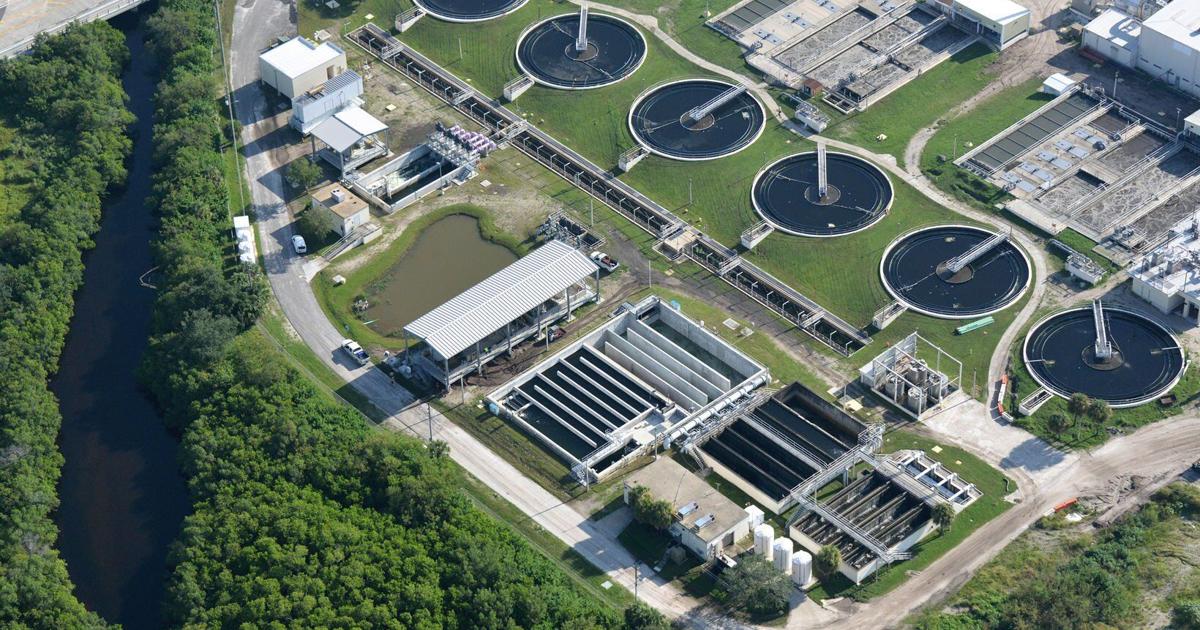LARGO — The Largo City Commission on Oct. 7 approved two contracts that pave the way for work to begin on the installation of a pair of wastewater deep injection wells.
The 6-0 vote awarded a contract of just over $8 million to Applied Drilling Engineering after the city advertised the project for competitive bidding in February. The cost includes $1 million in contingency funds in case complications arise.
In November 2022, the commission approved a $2.5 million contract with Hazen and Sawyer for design and permitting services. Project design was completed, and Largo received its approved construction and operation permits in fiscal 2025.
According to Senior Project Manager David Drash, the money will come from a $26 million Florida Department of Environment Protection loan and will be used to construct two treated effluent injection wells and associated monitoring wells, with two set to be located at the city’s Wastewater Reclamation facility site.
Because of the highly specialized and technical nature of deep well installation, the project is being solicited for construction under two contracts, according to city documents. The second contract covers general surface facilities improvements for the construction of surface-level piping and associated infrastructure.
“The second contract for the surface level improvements is scheduled to be posted for bidding in the spring of 2026,” Drash said.
The project has been discussed since 2020, when the commission began moving it forward.
The need for the wells stemmed from legislation passed in 2021 requiring local wastewater utilities to eliminate surface water discharges by 2032, forcing the city to find another option for the 6 million gallons of treated effluent it discharges daily to Old Tampa Bay through Feather Sound, according to officials.
Deep injection wells, which inject treated wastewater deep underground, have long been sources of controversy in communities that plan to utilize them, with environmental and long-term effects topping the list of concerns.
The plan calls for discharging treated wastewater in wells 800 to 1,200 feet underground in a permeable zone well below the aquifer used for drinking water.
Mayor Woody Brown, a self-described former skeptic, said he was convinced of the wells’ value after watching a presentation last year on deep well injections by the Agency on Bay and Coastal Management.
He said he “was surprised to learn how often it’s used throughout the state.”
Commissioner Michael Smith was absent.
The second item related to the project received more scrutiny during the Oct. 7 meeting, as one commissioner initially questioned awarding a $570,000 contract to an outside firm for loan compliance services.
“I know this is for things like wages, et cetera,” Commissioner Mike DiBrizzi said via Zoom. “But why are we not doing this in house?”
On Sept. 16, the commission authorized the Finance Department to seek the $26 million DEP loan for the project.
Engineering Services Director Jerry Woloszynski explained that to comply with the terms of the State Revolving Loan Fund debt, the city needs to use specially trained workers for required tasks that it doesn’t have on staff.
“Having staff skilled enough to do this every four to five years is not recommended,” he said, adding it’s easier to obtain consulting services with the necessary expertise to train city employees.
“This ensures we remain in compliance with all the terms and conditions of the loan.”
While DiBrizzi reiterated that $570,000 was “a lot of money,” he said he understood the need to pay for the service “if we don’t do this very often. I was back and forth with this one. But I’m a little more comfortable.”
Commissioner Chris Johnson agreed.
“I’m familiar with federal paperwork and I agree it’s difficult to read every federal statute and get everything right,” he said. “So, I understand we need to move forward with this today.”
The motion to award the $572,000 contact to Angie Brewer and Associates passed 6-0.
Strategic plan
During a Sept 9 work session, Assistant City Manager Meridy Semones outlined proposed changes to the city’s strategic plan through 2030, moves proposed following nearly two years of research and development that included leaving some elements unchanged.
“We have very strong values based on the culture here,” Semones said. “So, our values stayed the same.”
During the first reading of the Vision 2030 Strategic Plan on Oct 7, Semones said Largo is committed to its mission “to provide superior services that inspire community pride while working toward the vision of being the community of choice in Tampa Bay.” The city’s values include commitments to integrity, collaboration, passion and creativity and the results were reached following 18 months of outreach, she said.
“All of this feedback, in addition to direction from the City Commission, led us to tonight,” she said, adding, “Tonight marks the culmination of the strategic planning process and now it’s time for all of to get to work.”
Semones said the next steps include a commission meeting on Nov. 13 “where we will talk about prioritizing the 24 goals to help support implementation.” She directed questions to the city’s dedicated strategic plan webpage.
During the public comment, Greg Gardner questioned the expense related to the project, stating the 2030 plan “is where we’re gonna spend ridiculous amounts of money. ‘We’re gonna save the planet!’ We’re off that path, and the county is off that path. So, why are we still on it?”
DiBrizzi, however, said, “I think it’s OK to set goals that are wide ranging and look at all of the different aspects of our city. But at the end of the day, we are going to prioritize what those goals are based on the best needs of the city.
“In the meantime, I’m OK with a plan that does try to capture everything that we could be looking at and then we will decide when we get together at the end of November what we should be prioritizing.”
The motion to adopt the Vision 2030 Strategic Plan on first reading passed 6-0.

